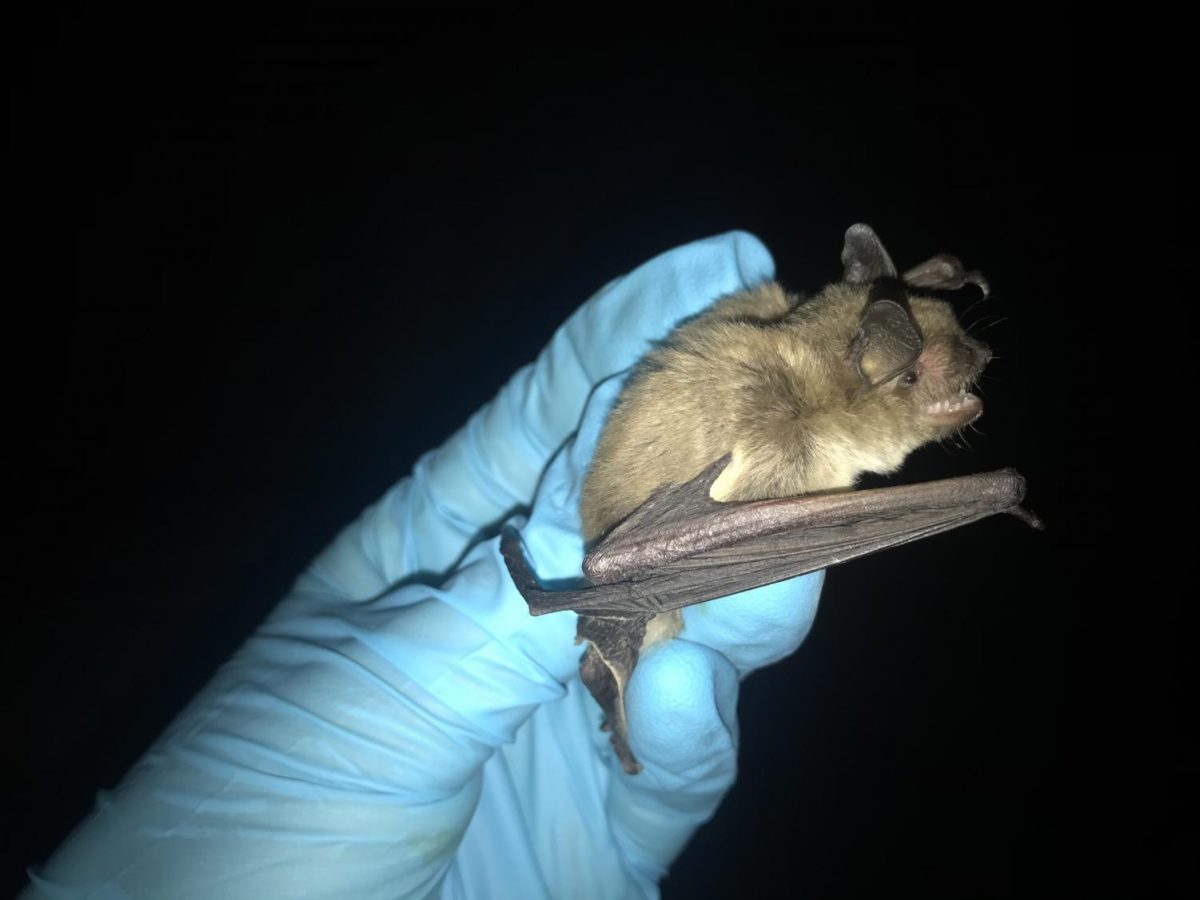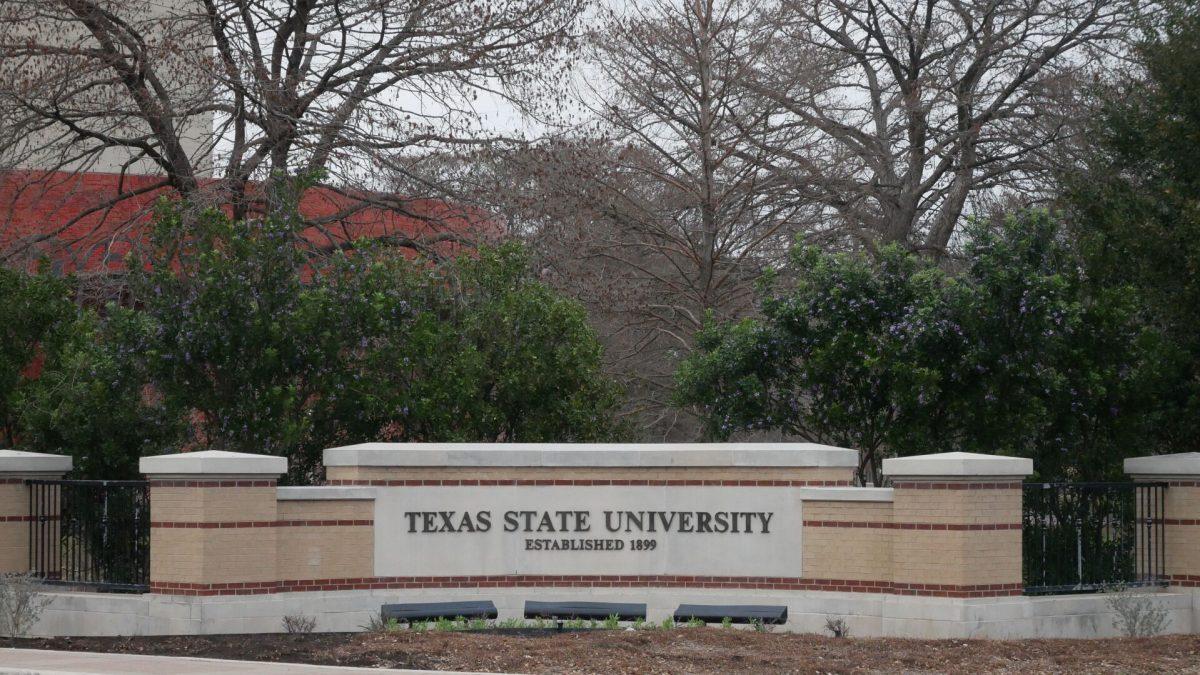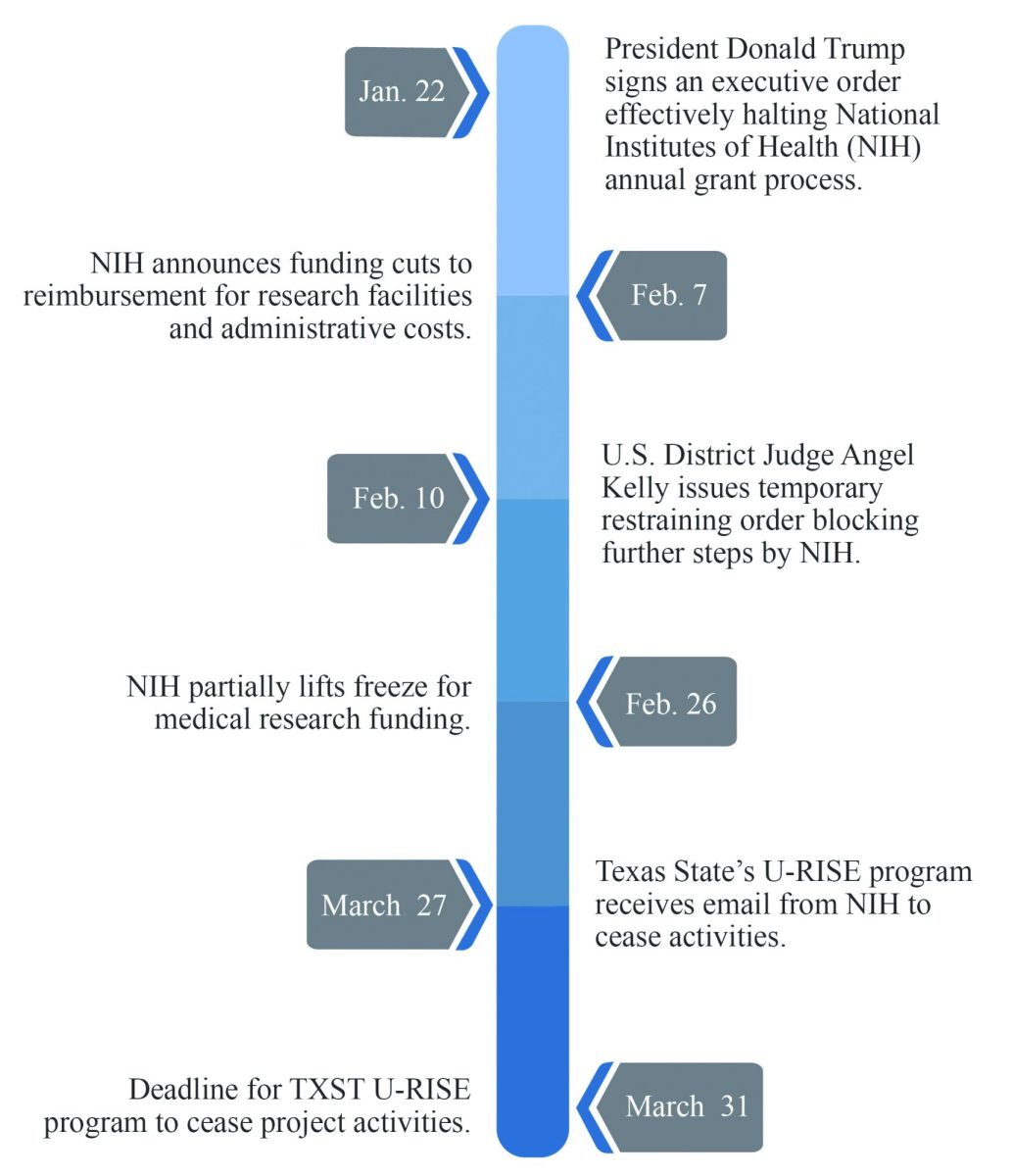Bats are being saved from the dangers of wind turbines thanks to research conducted in the Texas State biology department.
Texas State assistant biology professor Sarah Fritts and Texas A&M University at San Antonio lecturer of biology Sara Weaver collaborated with energy companies and institutions to prevent bat fatalities caused by wind turbines.
Fritts and Weaver have partnered with NextEra Energy, Bat Conservation International, the National Renewable Energy Lab and NRG Systems to study bat behaviors when introduced to an ultrasonic acoustic deterrent. The UAD, developed by NRG Systems, produces high and low frequencies, preventing bats from running into wind turbines.
Wind energy has become a growing industry in the U.S., providing environmental benefits like reducing carbon emissions and saving billions of gallons of water a year. In a 2019 press release, the American Wind Energy Association declared Texas to be the leading producer of wind energy in 2018.
Wind turbines pose a threat to migratory bat species. A study published in Biological Conservation showed the Hoary bat, most frequently killed by wind turbines, could decline in population by 90% in the next 50 years.
Graduate student Brittany Stamps, along with Texas State graduates Melissa Moreno, Rob Tyler and Kaileigh Smith, have assisted Fritts and Weaver in constructing the largest open-air flight cage in the U.S.
The bat cage is located at the Texas State Freeman Center.
“As far as an open-air flight cage specifically designed for bat research goes, it is the largest any of us have ever heard of,” Fritts said.
Fritts said reasoning for the cage size is due to the team wanting to ensure bats can move comfortably and naturally inside the cage and mimic the width of a wind turbine blade.
“Places are building turbines longer now,” Fritts said. “We put it in a location where we can build for future testing.”
Weaver partnered with NRG Systems, Texas Wind Energy, Duke Energy and Texas Parks & Wildlife to conduct a study in 2017 and once more in 2018 to see if the deterrent technology would be successful in reducing bat fatalities.
“I wanted to do something where we could look at and potentially reduce impacts to bat species,” Weaver said.
The research team saw an average reduction of 50% for all bat species, 54% for the Brazilian Free-Tail bat and 78% for the Hoary bat. The study indicated no reductions for the Northern Yellow bat.
Weaver realized she would need an open-air flight cage to study and understand the various responses of each individual species when introduced to a deterrent.
Stamps and the three technicians began testing in October 2019. The team collects bats on private property near the Freeman Center. The animals are then transported to the open-air flight cage, where individual bats are tested with low and high frequencies to see if the mammals will flock to the opposite side from the obstacle. The deterrent is not harmful to the bats.
“The deterrent works by annoying the bats and in a sense, masking the bats’ ability to see,” Stamps said. “They would not be able to find food in the area the sound emitted, so they would leave.”
WNS disrupts bats in hibernation, making the creatures more active than usual and burning fat they need to survive during winter.
Once the team is finished observing and reporting, the bats are then transported back to the private property.
The number of bat fatalities is increasing due to wind-power facilities as well as threatened by a disease known as white-nose syndrome. WNS is responsible for the deaths of 90-99% of specific species. Twelve bat species have been found with WNS disease symptoms, including two federally endangered species: the Gray and Indiana bat.
“From 2006 to 2012, it was estimated 5.6 million bats had died in those six years,” Stamps said.
In a press release Bat Conservation International issued May 2019, Pseudogymnoascus destructans—a fungus causing WNS—has been spotted in Texas. While there is no cure for the syndrome, reducing bat fatalities caused by wind turbines can aid in the population decline.
Bats have a greater economic impact on the world than what is understood. According to a report from Science Magazine in 2011, bats’ estimated worth is $3.7 billion annually in reduced crop damage and pest control.
“Bats save farmers millions of dollars annually in Texas, throughout the U.S. and billions throughout the world in pest control,” Fritts said. “This saves consumers from having chemicals put into food.”
NextEra Energy is funding the project for 2019. Fritts and Weaver have a pending contract with the Department of Energy that will fund the research for the next two years.
The team’s goal is to obtain 30 of each bat species to see if there is variability in behavior when introduced to the deterrent between 2019-2020.
Categories:
Long live the bats
October 29, 2019
Texas State Grad Student Brittany Stamps attempting to make the Myotis velifer, also known as the “cave bat” smile. Photo credit: Michael Garcia
0
Donate to The University Star
Your donation will support the student journalists of Texas State University. Your contribution will allow us to purchase equipment and cover our annual website hosting costs.
More to Discover















